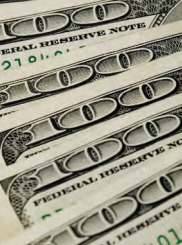Question:
How do I ensure that my sales figures, according to my point of sale system, make it to the bank?
Answer:
You need to practice internal control. First, print a daily sales report from the point of sale and from your credit card machine if you have a standalone terminal. Next, create a system or worksheet that compares the total daily sales to the cash and credit cards accepted, along with noncash transactions, paidouts of cash, and tips. The result of this closeout worksheet will be a calculated daily cash bank deposit and the credit card charges for the day, along with the over/short for the day.
 The following day, go online to your banking institution and verify that the cash calculated in your closeout worksheet the night before agrees with the day’s cash bank deposit, and the credit card batch total from the day prior agrees with the activity being credited to the bank (usually recorded two days later). You should create a system or worksheet to track daily sales as you compare them to outside sources, such as online banking and credit card activity. Don’t procrastinate; discipline yourself to perform this task daily.
The following day, go online to your banking institution and verify that the cash calculated in your closeout worksheet the night before agrees with the day’s cash bank deposit, and the credit card batch total from the day prior agrees with the activity being credited to the bank (usually recorded two days later). You should create a system or worksheet to track daily sales as you compare them to outside sources, such as online banking and credit card activity. Don’t procrastinate; discipline yourself to perform this task daily.
Ideally, you want to separate the individual responsible for creating the daily closeout worksheet from the employee who makes the cash deposits in the bank and the person who verifies that the actual monies were credited to the bank on a daily basis. Understandably, in a small pizzeria with very few employees, these tasks may have to be performed by the same employee. Regardless, determine a way to separate these duties to allow for cross-checking the accuracy of the restaurant numbers. Never assume that the “trusted manager” that you have known for years won’t purposely misstate a cash deposit, claim that the deposit was lost, or bunch up daily deposits and make two or three days’ deposits from cash sales all at once. A culprit may often be the employee who can talk his way out of missing cash, since no previous event has led the owner to believe otherwise.
Also, consider procedures to identify kickbacks from food vendors to employees (generally the chef or person doing the buying taking a commission and making the restaurant pay more for the merchandise); or vendors delivering supplies that weigh less than the amount stipulated on the invoice (indicating a possible collusion between the person receiving the merchandise and the delivery driver). A way to deter this: Have the employees perform a different task when the food orders are delivered to the restaurant, allowing you, as the owner, to perform the task. Similar to online banking, verify vendor purchases with online invoice reporting provided by the vendors to determine the completeness of an order.
Question:
I use a cash register, not a POS system. Does the above process change for verifying sales figures?
Answer:
The only change will be that the daily sales report will be in the form of a Z tape, which identifies all menu items sold per day or shift. This lengthy cash register tape will then be your starting point to prepare the daily cash close sheet. From here, the process is the same to verify the calculated cash deposit and credit card batch totals that are credited to your bank.
Again, we advise you to separate the functions performed by employees (i.e., printing the daily Z tape, counting the cash, and making the cash deposit, including the daily credit card charges). The owner should consider cross-training of employees, forced absences, varied scheduling, and other methods of allowing multiple employees to perform similar tasks. This creates an environment where the staff does not become comfortable in any one position, or develop associate friendships and allow for collusion (and therefore the monies do not make it to the bank).
I cannot stress it enough: You must ensure that you have procedures in effect at the restaurant to enforce the daily tracking of cash and credit card activity and compare the balances to your bank activity.












